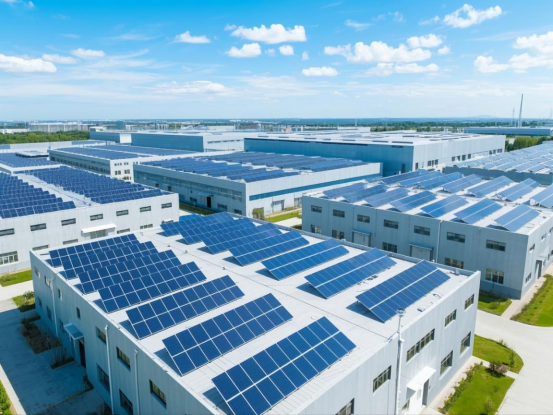
In recent years, with the rapid development of the photovoltaic power generation market, the control of operation and maintenance costs has become a focus of attention for enterprises. Under the background of the Ministry of Industry and Information Technology's promotion of the "capacity clearance" policy and domestic substitution, how to achieve cost reduction in operation and maintenance through technological innovation has become a hot topic in the industry. CHIPSENSE, with its leading modular sensor products, is leading this new logic of cost reduction.

Market transformation under policy guidance
The Ministry of Industry and Information Technology of the People's Republic of China is vigorously promoting the optimization of production capacity, encouraging enterprises to "cut overcapacity, reduce costs and improve efficiency", in order to promote industrial upgrading and the healthy development of the market. This policy not only requires enterprises to integrate and optimize resources, but also provides unprecedented opportunities for domestic equipment. As a leading domestic sensor manufacturer, CHIPSENSE precisely aligns with this trend. Through continuous innovation, it has achieved a splendid transformation from traditional design to modular and intelligent upgrades, promoting the process of domestic substitution.
Modular design - simplifies installation and shortens the cycle
Traditional photovoltaic operation and maintenance systems often involve numerous scattered sensors and monitoring devices, which not only increases the complexity of installation and commissioning but also easily leads to a continuous rise in maintenance costs in the later stage. The modular sensor products launched by CHIPSENSE have significantly enhanced the functional integration and intelligence level. Taking some of its products as examples, the adoption of standardized module design makes on-site installation and system integration extremely simple:
Rapid deployment: The modular design achieves a "plug and play" effect, significantly reducing the system installation and commissioning time.
Flexible expansion: Different modules can be flexibly assembled to meet the special requirements of various photovoltaic systems, enhancing the overall compatibility of the system.
Cost reduction: The simplified installation process and standardized product design effectively reduce on-site manual intervention, thereby lowering the overall operation and maintenance costs.
Remote diagnosis - intelligent monitoring, reducing labor costs by 50%
During the operation and maintenance of photovoltaic systems, equipment fault detection and timely maintenance are the keys to ensuring the stable operation of the system. The modular sensors of CHIPSENSE not only have high-precision monitoring capabilities but also can achieve remote diagnosis functions by connecting to the Internet of Things. Through the Internet and big data technologies, operation and maintenance personnel can grasp the operational status of each key node in real time, predict potential risks in advance, and achieve early detection and early handling of faults.
Real-time monitoring: The remote diagnosis system achieves 24-hour uninterrupted monitoring of the equipment status through data collection and transmission.
Fault early warning: The system uses intelligent algorithms to analyze data fluctuations. Once an anomaly is detected, it immediately triggers an early warning to shorten the response time.
Labor cost reduction: With the help of remote diagnosis, many tasks that traditionally required on-site processing can be completed in the background. According to statistics, the overall labor cost can be reduced by up to 50%.
CHIPSENSE Products - a model of domestic strength
Take several products recently launched by CHIPSENSE as examples, such as the AN1V PB511/501/311/521, AN3V PB30 and AN5V PB00 series of micro programmable Hall current sensors. These products not only perform well in parameters - with advantages such as low power consumption, high precision and wide temperature adaptability, It is even more distinctive in modular design and remote diagnosis capabilities. Their successful application is a vivid practical case of capacity optimization and domestic substitution policies, bringing a strong impetus for cost reduction and efficiency improvement to the industry.
Conclusion
Under the impetus of the "capacity clearance" policy, the photovoltaic operation and maintenance industry is ushering in a spring of technological innovation. With its innovative design of modular sensors and remote diagnostic functions, CHIPSENSE has not only significantly enhanced the installation efficiency and operational reliability of the system, but also provided strong support for the direct reduction of photovoltaic operation and maintenance costs. In the future, with the continuous deepening of domestic substitution and intelligent technologies, it is believed that this cost reduction logic will be adopted by more and more enterprises, promoting the entire industry to develop in a more efficient and intelligent direction.
CHIPSENSE is a national high-tech enterprise that focuses on the research and development, production, and application of high-end current and voltage sensors, as well as forward research on sensor chips and cutting-edge sensor technologies. CHIPSENSE is committed to providing customers with independently developed sensors, as well as diversified customized products and solutions.
“CHIPSENSE, sensing a better world!
www.chipsense.net
4F, Building C, ZHENGLING.Hi-TECH PARK(Core Space) , No. 2 Cuizhu 2nd Street, Xiangzhou District, Zhuhai, Guangdong Province, China
+86-756-8600806